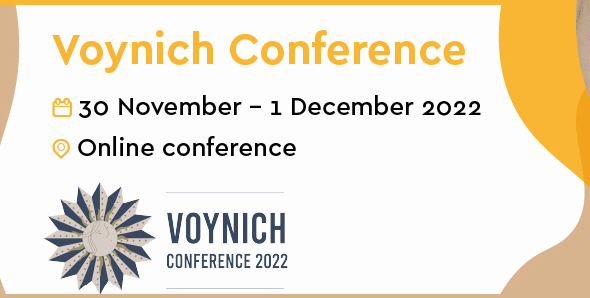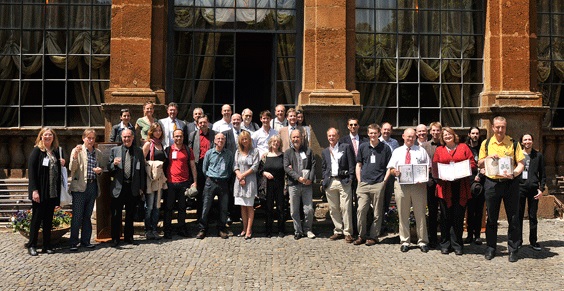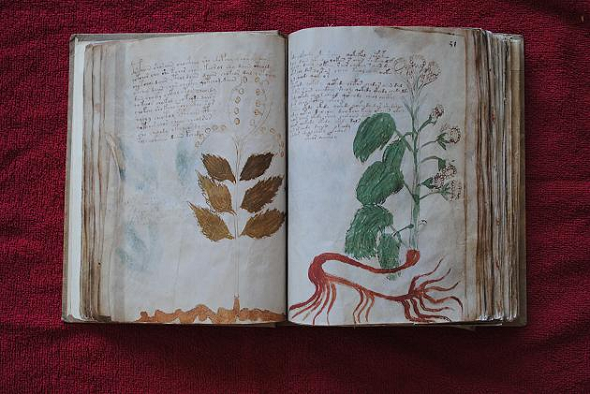In vier Wochen findet eine Online-Konferenz zum Voynich-Manuskript statt. Einige alte Bekannte werden als Redner dabei sein.
English version (translated with DeepL)
Zehn Jahre ist es her, dass die letzte Konferenz zum Voynich-Manuskript stattfand. Ort des Geschehens war damals die Villa Frascati vor den Toren Roms, wo Wilfrid Voynich nach eigenen Angaben im Jahr 1912 auf das geheimnisumwitterte Buch gestoßen war. Das folgende Foto ist vor dem Eingang dieses Gebäudes entstanden:
Die Konferenz fand also genau 100 Jahre nach der vermuteten Wiederentdeckung des Manuskripts statt und hieß deshalb “Voynich 100”. Sie wurde von René Zandbergen, Michelle Smith und Claudio Foti organisiert. Über 80 Leute kamen – es gab also mehr Besucher als später bei der HistoCrypt.
Zu den Teilnehmern gehörten unter anderem Nick Pelling und Richard SantaColoma, die bis heute in der Voynich-Szene aktiv sind. Auch Elonka Dunin, Dennis Stallings und Philip Neal dürften einigen Lesern bekannt sein.
Die “Voynich 100” wurde als Einladungskonferenz durchgeführt. Die Organisatoren legten also die Redner und das Programm fest. Ich war mit einem Vortrag über die statistischen Eigenschaften des Voynich-Manuskript-Texts vertreten.
Die VC22
Gut zehn Jahre sind inzwischen vergangen, und nun findet in vier Wochen endlich wieder eine Voynich-Manuskript-Konferenz statt. Dieses Mal wird sie von Mitarbeitern der Universität Malta organisiert und als Online-Konferenz abgehalten. Die Teilnahmegebühr beträgt 50 Euro. Laut Webseite heißt die Veranstaltung schlicht “Voynich Conference 2022”. Ich plädiere dafür, die Abürzung “VC22” zu verwenden.
Die VC22 ist keine Einladungskonferenz, sondern wird im Stil einer wissenschaftlichen Fachkonferenz mit Peer-Review durchgeführt. Es gab daher einen Call for Papers, der offiziell zur Einreichung von Vorträgen aufrief. Ein Programm-Komitee bewertete die eingegangenen Beiträge im Blindverfahren, woraufhin die am besten bewerteten Einreichungen angenommen wurden. Wie bei solchen Konferenzen üblich, mussten die eingereichten Beiträge recht ausführlich sein. Wer eine Zusage erhielt, musste seine Einreichung zu einem neunseitigen Fachartikel erweitern, der demnächst im Konferenzband erscheinen wird.
Zusammen mit Elonka Dunin habe ich einen Beitrag mit dem Titel “The Voynich Manuscript Compared with Other Encrypted Books” eingereicht. Darin wird das Voynich-Manuskript mit anderen Büchern auf meiner Encrypted Book List verglichen, um anschließend verschiedene Schlüsse zu ziehen. Der Vorschlag erhielt gute Bewertungen und wurde angenommen.
Vorträge in Berlin
Wer nach der Konferenz noch nicht genug vom Voynich-Manuskript hat und im Raum Berlin wohnt, hat zwei weitere Gelegenheiten, sich Vorträge zum Thema anzuhören:
- Am 3. Dezember 2022 werde ich bei der Veranstaltung “Wir machen Bücher” eine Präsentation über das Voynich-Manuskript halten. Anlass ist die vor Kurzem erschienene kommentierte Voynich-Manuskript-Ausgabe, zu der ich das Nachwort beigesteuert habe.
- Am 14. Dezember 2022 wird Stefan Guzy, der auch bei der VC22 als Referent vertreten ist, in der Staatsbibliothek zu Berlin einen Vortrag über die Besitzgeschichte des Voynich-Manuskripts halten.
Das Programm der VC22
Doch zurück zur VC22. Seit ein paar Tagen ist das Programm der Veranstaltung auf der Webseite verfügbar. Wie zu erwarten, sind ein paar alte Bekannte unter den Rednern vertreten. Den Einführungsvortrag wird Ray Clemens von der Beinecke Library, der Besitzerin des Manuskripts, halten. René Zandbergen, der meiner Meinung nach bedeutendste Voynich-Manuskript-Experte überhaupt, wird die erste Keynote beisteuern. Eine weitere Keynote kommt von Lisa Fagin Davis, die in den letzten Jahren mit einigen Veröffentlichungen zum Thema auf sich aufmerksam gemacht hat. Keynotes und Einführungsvorträge werden üblicherweise nicht über den Peer Review bestimmt, sondern vom Veranstalter festgelegt.
Im Peer-Review-Programm werden Elonka Dunin und ich am zweiten Tag referieren. Jürgen Hermes aus Köln ist bei der VC22 ebenfalls als Referent mit von der Partie. Soweit ich sehe, bilden er, Stefan Guzy und ich die deutsche Fraktion unter den Rednern.
Schade finde ich, dass viele langjährig bekannte Größen aus der Voynich-Szene nicht im Programm auftauchen. Weder Richard SantaColoma noch Nick Pelling noch Torsten Timm noch Elmar Vogt noch Gordon Rugg noch Andreas Schinner ist mit einem Vortrag vertreten. Ob die genannten Personen keine Lust hatten, das aufwendige Peer-Review-Verfahren mitzumachen, ob ihre Beiträge abgelehnt wurden oder ob es andere Gründe gibt, ist mir nicht bekannt.
Wie es scheint, bin ich neben Renè Zandbergen der einzige Redner auf der VC22, der bereits vor zehn Jahren bei der “Voynich 100” vorgetragen hat. Ich hoffe, dass die Veranstaltung genauso spannend wird wie damals.
Follow @KlausSchmeh
Further reading: Ist das Voynich-Manuskript durch Selbstzitate entstanden?
Linkedin: https://www.linkedin.com/groups/13501820
Facebook: https://www.facebook.com/groups/763282653806483/





Kommentare (10)